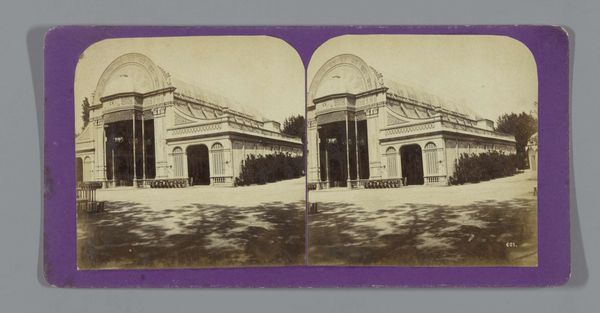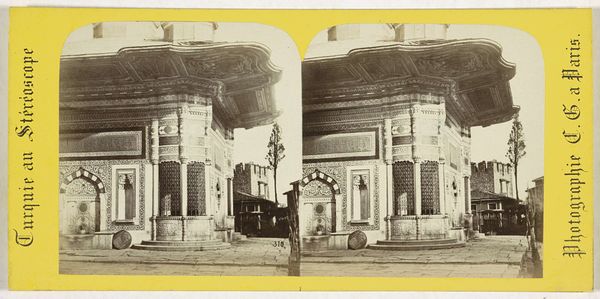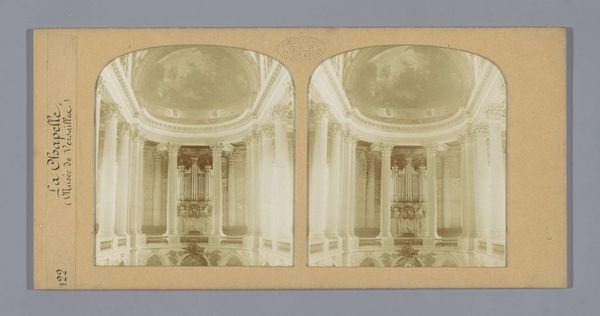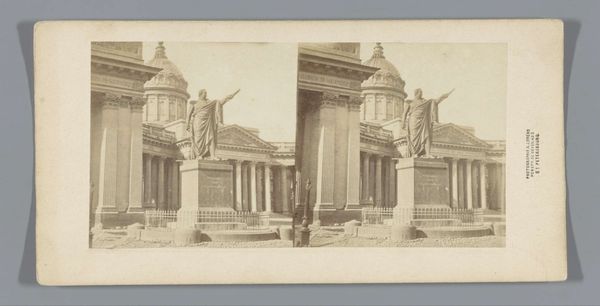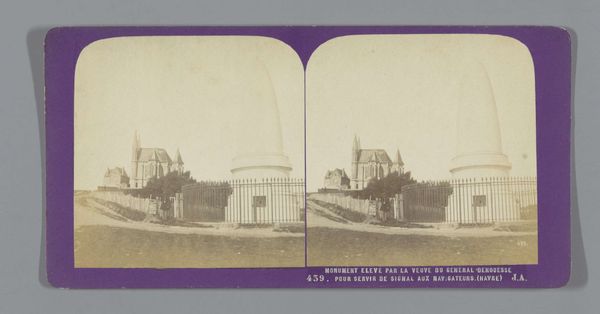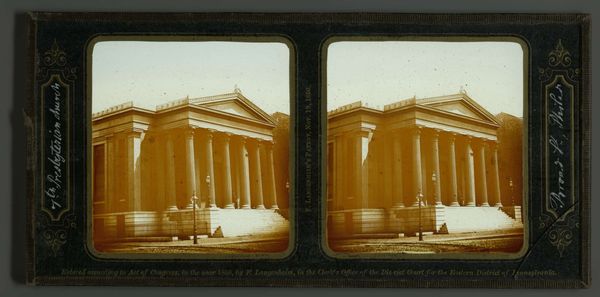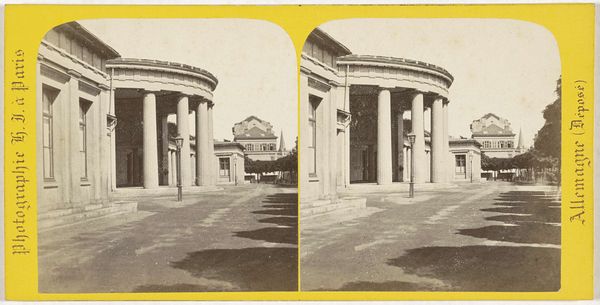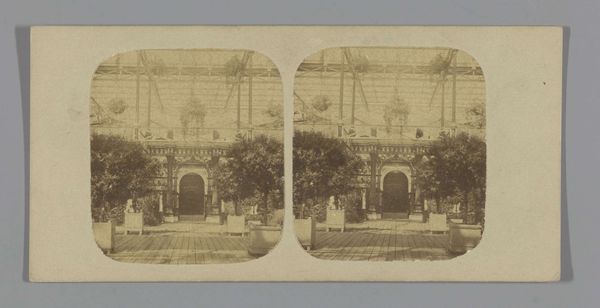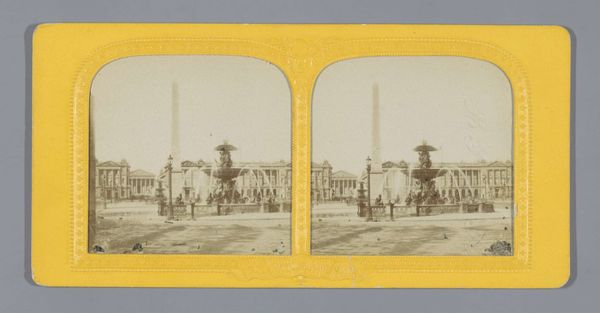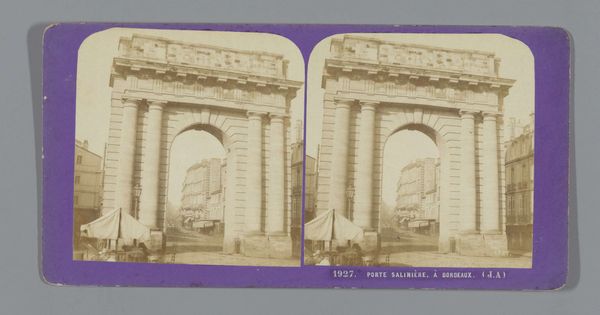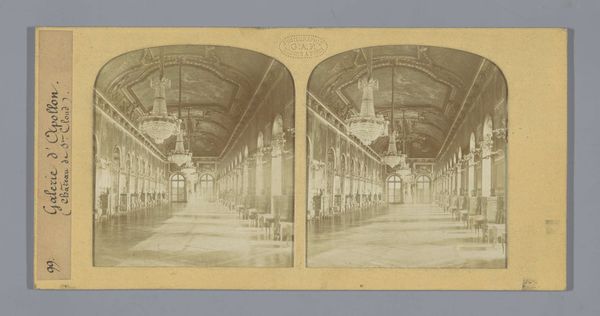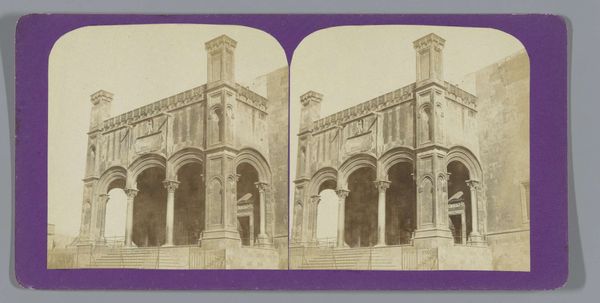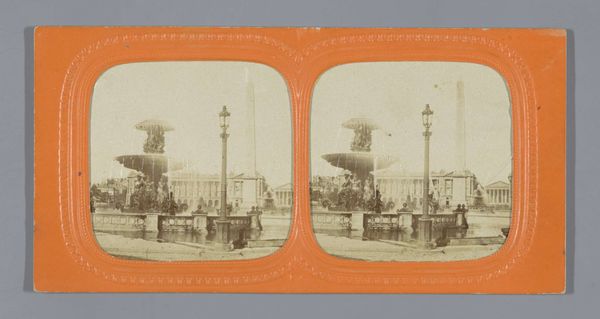
print, daguerreotype, photography
#
neoclacissism
# print
#
landscape
#
daguerreotype
#
strong focal point
#
photography
#
geometric
#
cityscape
#
history-painting
Dimensions: height 85 mm, width 175 mm
Copyright: Rijks Museum: Open Domain
Curator: Before us is Frederick Langenheim's 1854 daguerreotype, "Gezicht op het Capitool in Washington D.C.," or "View of the Capitol in Washington D.C." The very image speaks of authority and order, does it not? Editor: Indeed. Immediately I’m struck by the sense of burgeoning optimism. But this idealized vision feels oddly unsettling, like something important is intentionally excluded from the frame. Curator: Consider the meticulously structured composition, typical of neoclassicism: the clear geometric forms, the rhythmic repetition of columns creating a strong sense of perspective leading toward that central dome. Editor: And consider what the strong focal point of the Capitol building truly represents here, constructed as it was with enslaved labor. This isn't just a serene cityscape; it's a document—a powerful, yet silent articulation of privilege and the subjugation of an entire people. Curator: It presents a seemingly objective rendering, a scientific observation through the lens of early photographic technology, with the formal language rooted in Renaissance ideals of symmetry and balance. Editor: But objectivity is always a fallacy. Look closer: no people populate this civic stage. It seems as though something vital has been intentionally erased to aggrandize notions of national progress rooted in exclusion. This piece reveals how intertwined notions of democracy were with the erasure of the marginalized. Curator: Perhaps you read too much into the empty foreground. It strikes me as more practically motivated; after all, given the long exposure times inherent in early photography, capturing moving figures would have been nearly impossible, distorting any intentional portrayal of city life at the time. Editor: The 'city life' it conveniently overlooks? A landscape devoid of the real human cost used to construct this imposing structure serves to naturalize and validate a social and political system steeped in oppression. It encourages a skewed national memory, obscuring a complex narrative with visually deceptive simplicity. Curator: In that light, I must confess this work’s clean lines start to feel somehow colder. Editor: Precisely. Engaging with these works demands that we investigate the history embedded in every photographic decision.
Comments
No comments
Be the first to comment and join the conversation on the ultimate creative platform.
